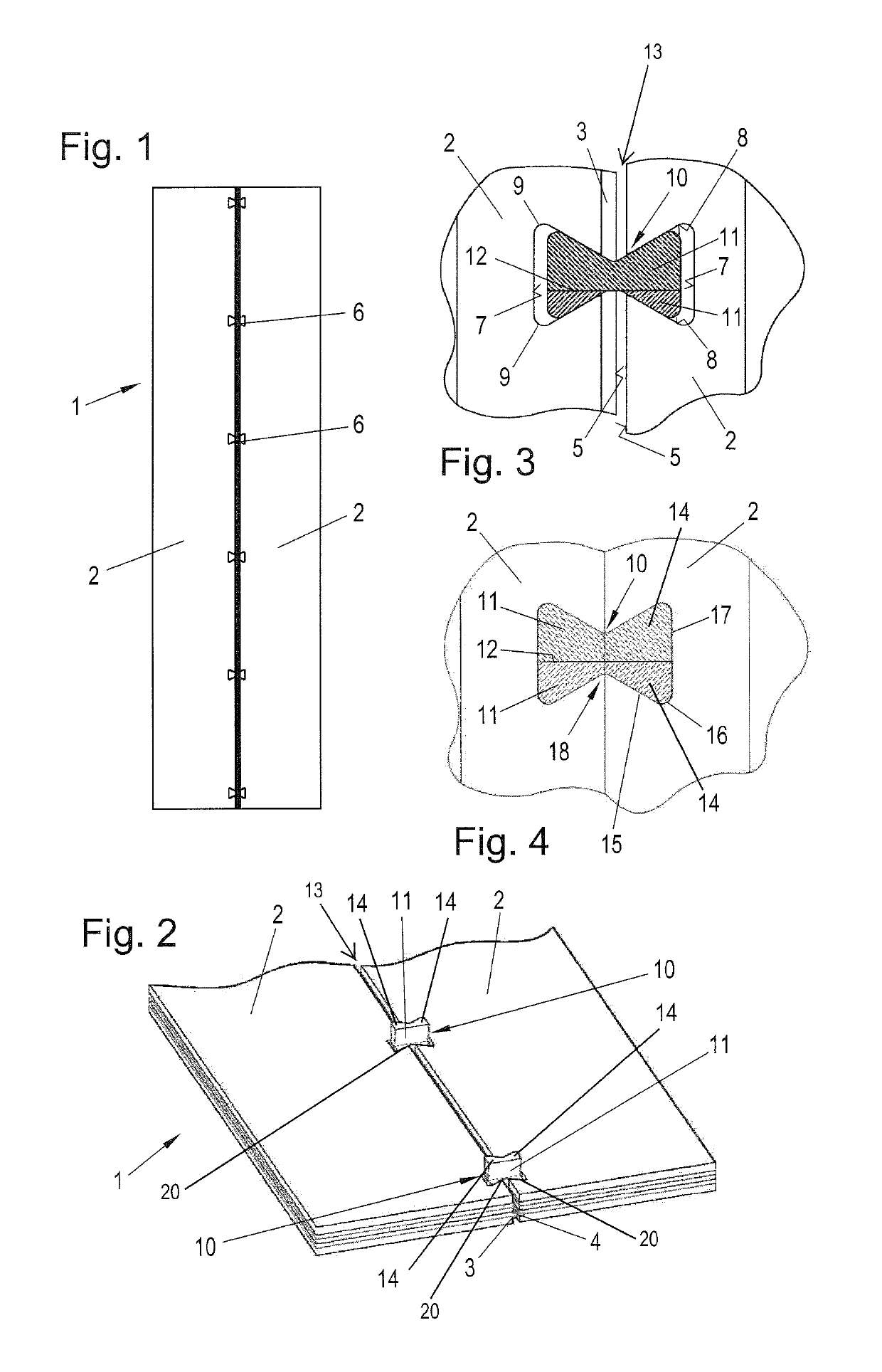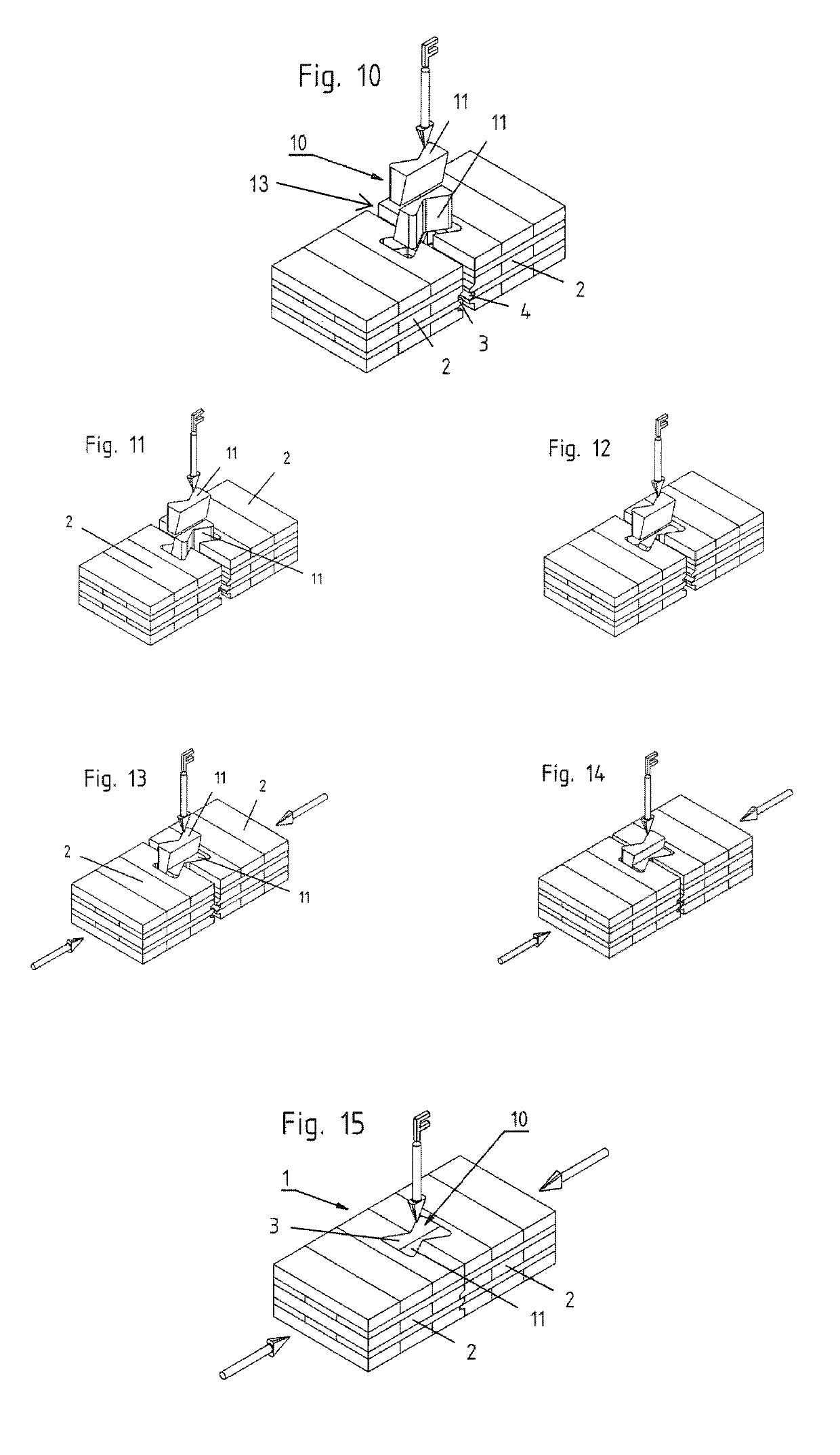Component and production method
a technology of components and production methods, applied in the field of components, can solve the problems of residual stresses, inability to move, and irregularity of panel-shaped pieces, and achieve the effects of easing the loosening of extending the connection of pieces, and permanent overturning the gap
- Summary
- Abstract
- Description
- Claims
- Application Information
AI Technical Summary
Benefits of technology
Problems solved by technology
Method used
Image
Examples
Embodiment Construction
[0043]A component 1 (not yet completed) that is shown schematically in FIG. 1 and that is, for example, a component for a ceiling comprises two pieces 2 (ceiling elements) that are facing one another via their narrow surfaces 5. In the narrow surfaces 5, in one piece 2 there is a groove 4 and in the other piece 2 there is a tongue 3 (FIG. 2). The tongue 3 can be a self-contained tongue or an outside tongue.
[0044]In the pieces 2 in the region of the narrow surfaces 5, there are recesses 6 that are made undercut; therefore, they each have a base 7 that is wider than the mouths of the recesses 6 that lie in the narrow surfaces 5 of the pieces 2.
[0045]In order to connect the pieces 2 to one another to form the component 1, connecting elements 10 are inserted into the recesses 6. Each of the connecting elements 10 consists of two wedge-shaped parts 11 that adjoin one another via their facing wedge surfaces 12. The wedge-shaped parts 11 of the connecting elements 10 are abutted such that ...
PUM
 Login to View More
Login to View More Abstract
Description
Claims
Application Information
 Login to View More
Login to View More - R&D
- Intellectual Property
- Life Sciences
- Materials
- Tech Scout
- Unparalleled Data Quality
- Higher Quality Content
- 60% Fewer Hallucinations
Browse by: Latest US Patents, China's latest patents, Technical Efficacy Thesaurus, Application Domain, Technology Topic, Popular Technical Reports.
© 2025 PatSnap. All rights reserved.Legal|Privacy policy|Modern Slavery Act Transparency Statement|Sitemap|About US| Contact US: help@patsnap.com



